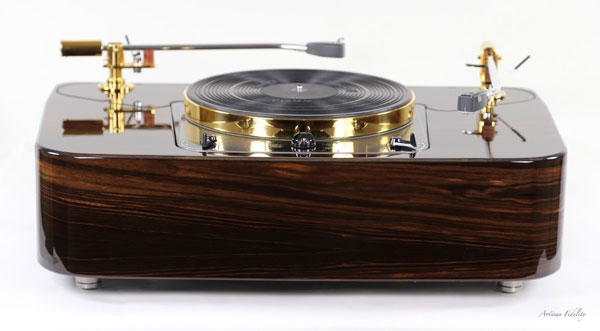
The tracks were each 215 cm (7 ft) wide with a 215 cm (7 ft) gap in-between giving an overall width of 640 cm (21 ft).
Garrard zero 100 idler wheel portable#
The chassis was supported on "numerous small wheels or rollers" which ran upon the lower iron bands, which "thus form a perfectly portable and smooth road for the platform". A strong chassis provided the bearings for the drums, carried the steam engine, fuel and winch. The continuous tracks were made of 215 cm (7 ft) sections of wood bolted to continuous iron bands which were driven by the 'drums' at each end. for Tiverton, the Heathcote steam plough was demonstrated in 1837 and press coverage fortunately provided a wood cut of this unusual tracked vehicle. Patented in 1832 by John Heathcoat (also Heathcote) M.P. Heathcote Steam Plough as demonstrated in 1837


In 1837, Russian army captain Dmitry Andreevich Zagryazhsky (1807 – after 1860) designed a "carriage with mobile tracks" which he patented the same year, but due to a lack of funds and interest from manufacturers he was unable to build a working prototype, and his patent was voided in 1839. The British polymath Sir George Cayley patented a continuous track, which he called a "universal railway" in 1825. Polish mathematician and inventor Józef Maria Hoene-Wroński designed caterpillar vehicles in the 1830s to compete with the railways.


The prominent treads of the metal plates are both hard-wearing and damage resistant, especially in comparison to rubber tyres. The more common classical type is a solid chain track made of steel plates (with or without rubber pads), also called caterpillar tread or tank tread, which is preferred for robust and heavy construction vehicles and military vehicles. Modern continuous tracks can be made with soft belts of synthetic rubber, reinforced with steel wires, in the case of lighter agricultural machinery. The large surface area of the tracks distributes the weight of the vehicle better than steel or rubber tyres on an equivalent vehicle, enabling continuous tracked vehicles to traverse soft ground with less likelihood of becoming stuck due to sinking. Continuous track is a system of vehicle propulsion used in tracked vehicles, running on a continuous band of treads or track plates driven by two or more wheels.


 0 kommentar(er)
0 kommentar(er)
